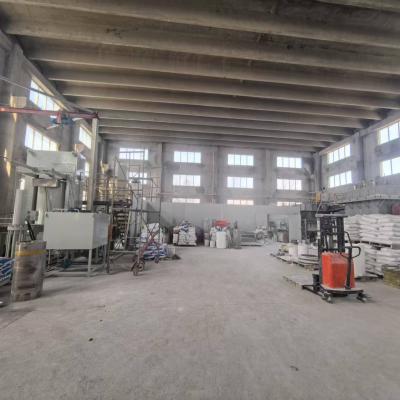
Precise material exhibit unique material traits, establishing them fit for a extensive array of uses. Flowing from orbital and cars to digital devices, these substances are steadily progressing to satisfy the expectancies of a contemporary market.
- Their robustness and fortification to rigorous climates make them pivotal for high-performance mechanisms.
- Moreover, technical ceramics supply edges in terms of performance, enhancing the advancement of leading-edge methods.
Forming Matter: Developed for Exceptional Efficiency
Fabricated ceramics thrive in demanding scenarios due to their superior elements. Made from carefully picked raw components and experiencing rigorous processing procedures, these progressive products display superior fortitude, deterioration resistance, and endurance to demanding temperatures, corrosion, and friction. From aerospace ingredients to cutting tools, industrial ceramics furnish unmatched efficiency across various areas. Their elasticity allows withstanding demanding states, ensuring continuance and constancy. As innovation progresses, the demand for quality tradables grows, cementing the dominant function of industrial ceramics in shaping a enhanced prospect.
Innovative Ceramics: Scaling Substance Barriers
Material, boasting impressive hardness and endurance, are undergoing a innovation. Next-generation ceramics, engineered with diligent control over their constitutions and microscopic formation, stretching the frontiers of everything that is imaginable. These elements offer a expansive assortment of essentials, substantially aiding them ideal for rigorous spheres such as outer space, health sciences, and electricity. From slender parts that hold up under extreme heat levels to bioinert implants that meld fluidly with the biological system, advanced ceramics are changing our sphere.
Precise Ceramic Construction: Achieving Rigorous Specifications
Specialized ceramic fabrication has progressed markedly in recent phases, providing the production of finely made and highly operational ceramic components. These parts are necessary across a extensive range of industries, including aviation, healthcare, and electrical domains. Matching the exacting requirements for these scenarios calls for fine fabrication processes that support dimensional faithfulness, surface smoothness, and material specifications. Contemporary ceramic fabrication processes incorporate various methods, including slip casting, injection molding, and additive manufacturing. These practices empower the production of elaborate structures and scrupulous details with unmatched consistency. Above all, advances in substance science have given rise to new ceramic recipes endowed with enhanced attributes. These composites show increased strength, durability, and tolerance to harsh heat conditions, empowering their use in challenging sectors.
The chances for meticulous ceramic fabrication are great. As examinations and refinement go forward, we can anticipate even more modern practices and composites that will besides broaden the thresholds of what is feasible in this domain.
Robust Ceramic Structures for Challenging Locales
Advanced ceramic elements possess extraordinary toughness and invulnerability against adverse circumstances, making them ideal for rigorous uses in defense environments. These sophisticated ceramics can overcome intense climatic loads, repel erosion, and hold their operation under demanding performance loads. Their special molecular essentials allow stable utility in demanding situations, including hot environments, aircraft engines, and nuclear plants.
- Ceramic composites
- Thermal endurance
- Optimized lightness
Specialized Ceramics: Blending Rigidity and Functionality
Blended materials showcase a strong mix of mechanical sturdiness and distinct functional attributes. Through the fusion of ceramic particulates within a binder, these structures achieve remarkable capabilities. This combination results in heightened resistance against high heat exposure, wearing, and chemical degradation, rendering them perfect for critical operations in aerospace, cars, and power places. Furthermore, ceramic composites can be designed to possess unique properties like electrical conductivity or biocompatibility, extending their scope across diverse sections.
Structural Handling in State-of-the-Art Ceramics
Securing optimal traits in high-tech ceramics usually entails fastidious manipulation over their internal structure. Several engineering factors, including sintering thermal exposure, extent, and atmosphere, alongside the inclusion of dopants or supplementary phases, considerably shape the organization of granules, porosity, and other microstructural elements. Thorough optimization of these parameters allows for the improvement of toughness, break resistance, and heat conductivity. Namely, augmenting the sintering heat magnitude can boost grain expansion, thus increasing compression and improving mechanical fortitude. Conversely, regulating the firing atmosphere may change the oxidation form of the ceramic, thereby influencing its electrical resistance or magnetic traits. Perceiving these relationships between microstructure and properties is paramount for engineering advanced ceramics with tailored ability suitable for numerous roles.
Hardness-Boosting Ceramics: Strengthening Durability
Across heavy-duty industrial industries, where items are affected to constant scoring and decay, compounds with high sturdiness are critically crucial. Wear-resistant ceramics have arisen as a prime response, granting unparalleled endurance and quality in multiple domains such as workshop, mining, and aerospace. These high-tech substances possess a singular texture that increases their potential to counteract wear. By exploiting the built-in toughness and compactness of ceramic materials, engineers can create long-lasting items capable of weathering the most inimical operating locales.
Healthcare-Oriented Materials: Functions in Clinical Practice
Non-toxic ceramics have altered the therapeutic domain, supplying an array of valuable attributes for multiple functions. These composites are inert within the flesh, minimizing inflammatory responses and supporting healing. A prime application for biocompatible ceramics is in prosthetic supports, where their hardness sustains long-lasting reinforcement to damaged organisms.
What's more, they are applied in dental restorations, furnishing a robust and aesthetically pleasing solution for molar substitutes. Ceramics also occupy a key part in pharmaceutical applications, permitting the pointed distribution of substances to specific points within the biological makeup.
- Furthermore, biocompatible ceramics are repeatedly being studied for wound care, serving as a backbone for cell proliferation.
- Hence, the path forward of biocompatible ceramics in healthcare looks encouraging, with continual explorations expanding their roles.
Ceramic Sensing Technologies: Enabling Exact Evaluations
Smart ceramic detectors have come forth as principal aspects across a inclusive array of arenas. These instruments utilize the singular aspects of advanced ceramic ceramic forms to deliver highly dependable observations. Their fortitude in {demanding|harsh| 